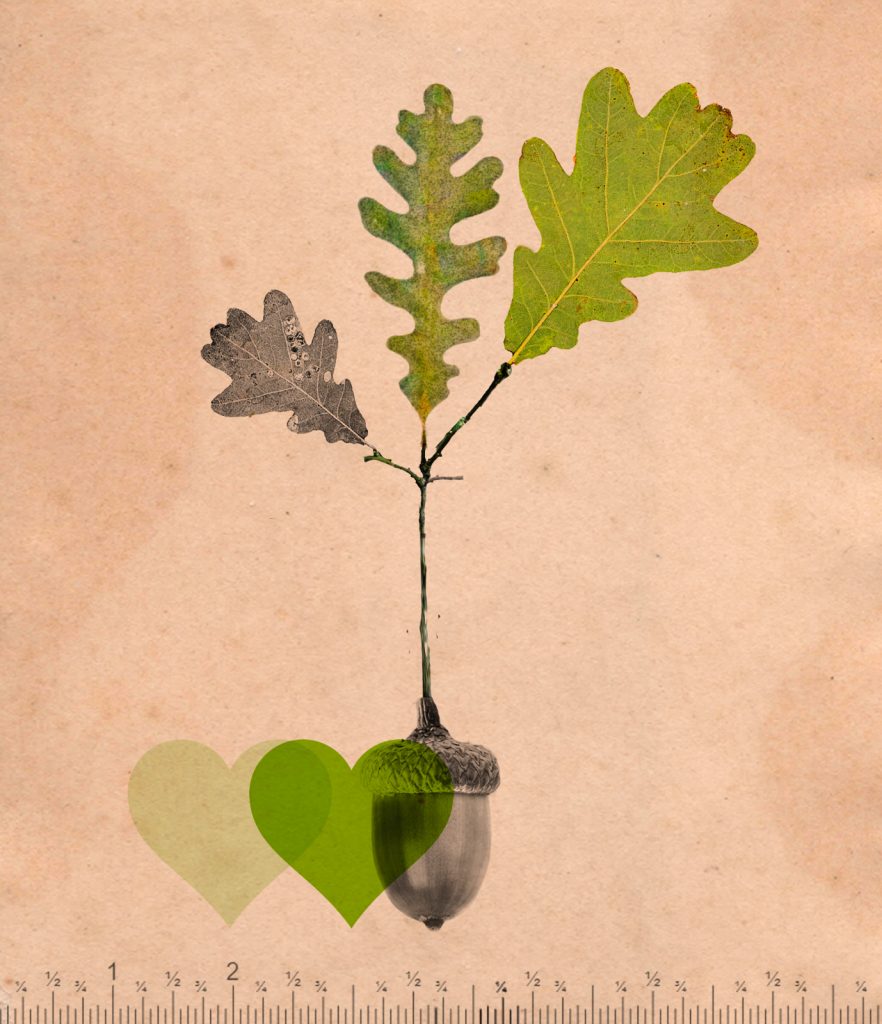sonogram photos—
the frozen beat of your heart
just one acorn wide
—Geneviève Wynand
Centuries of literary wisdom dictate that the so-called season words of haiku must be used literally rather than figuratively or metaphorically. If an acorn appears in a haiku, it must appear as an acorn. Between the season word and the thing it signifies stands an irrevocable equals sign. An acorn . . . is an acorn . . . is an acorn.
Except when it’s not.
Haiku exploded in popularity as it spread beyond Japan during the latter half of the 20th century. As non-Japanese poets adopted haiku into their native languages, some viewed the 5-7-5 syllable form as an empty vessel to be filled with whatever they could manage to fit inside of it. Others chose to honor the traditional subject matter of haiku. Even so, as time went on, they adapted season words to address a whole new range of subjects.
During her sonogram, the poet heard her baby’s heartbeat for the first time. Later, looking through the photos, she was able to locate the source of that sound. Such a tiny thing. Just one acorn wide.
Never mind that the heart of a fetus in the second trimester is roughly the shape and size of an acorn. All that the child is. All that he or she will become. All they will feel. It’s right there. The turn of thought is breathtakingly simple. That so much could dwell in a space so small is astounding.
But there is more. To compare a baby’s heart to an acorn presumes the presence not only of an individual human mother but also of the Mother of All Mothers, which is the earth—literally, soil. The bodies of those two “mothers” may appear discrete to our ordinary way of thinking, but ecology teaches us that they are inseparable. Advances in microbiology have revealed that there are more “dirt” cells in the human body than there are “human” cells. Life doesn’t begin at conception and end at death. Life is a planet.
Once we have grasped the vast ecological implications of the poem—that birth and death are of one body with the world—we may notice a smaller, more intimate meaning hidden in plain sight. For it is not the heart of the fetus that is being compared to the size of an acorn but the beat of that heart. Its life force.
Photography is a melancholy medium where human subjects are concerned. A photograph may yield a perfect likeness and remain lifeless. In superimposing the image of an acorn over the heart of her unborn child, the poet has captured something that the sonogram could not show.
Worry edges out over wonder, finally, as the dominant mood of the poem. What will become of a thing so small? Will it break? Will it suffer? How will it grow? Worry isn’t the only emotion overflowing from the 17-syllable world of this haiku. Just the strongest one.
♦
The Tricycle Haiku Challenge asks readers to submit original works inspired by a season word. Moderator Clark Strand selects the top poems to be published in Tricycle with his commentary. To see past winners and submit your haiku, visit tricycle.org/haiku. To read additional poems of merit from recent months, visit our Tricycle Haiku Challenge group on Facebook.
Thank you for subscribing to Tricycle! As a nonprofit, we depend on readers like you to keep Buddhist teachings and practices widely available.
